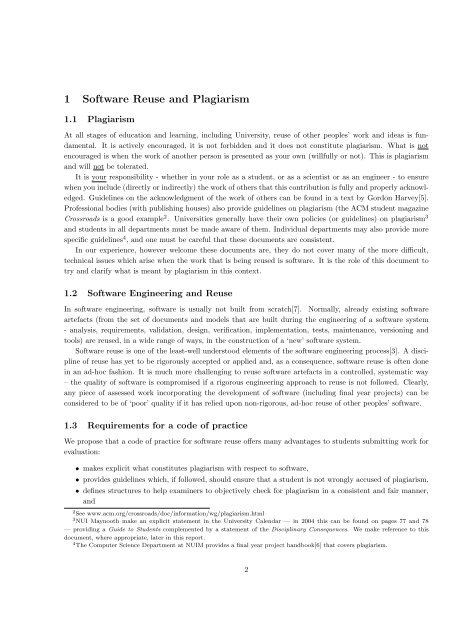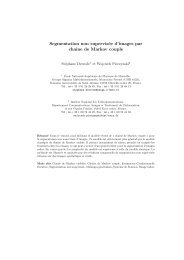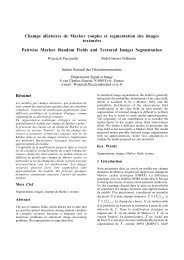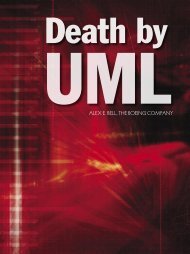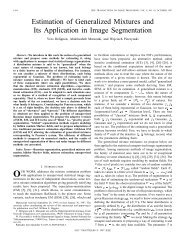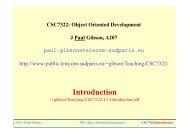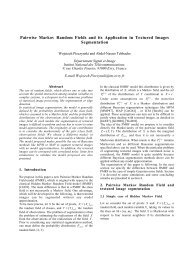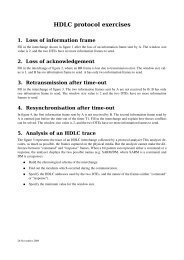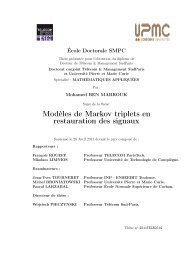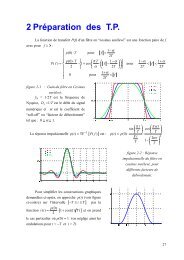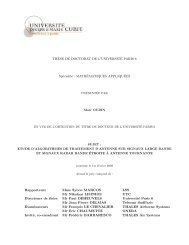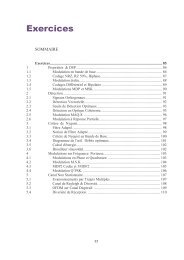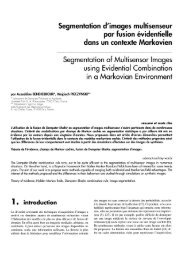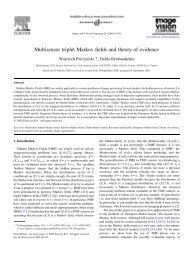Software Reuse In Final Year Projects: A Code of Practice Contents
Software Reuse In Final Year Projects: A Code of Practice Contents
Software Reuse In Final Year Projects: A Code of Practice Contents
You also want an ePaper? Increase the reach of your titles
YUMPU automatically turns print PDFs into web optimized ePapers that Google loves.
1 <strong>S<strong>of</strong>tware</strong> <strong>Reuse</strong> and Plagiarism1.1 PlagiarismAt all stages <strong>of</strong> education and learning, including University, reuse <strong>of</strong> other peoples’ work and ideas is fundamental.It is actively encouraged, it is not forbidden and it does not constitute plagiarism. What is notencouraged is when the work <strong>of</strong> another person is presented as your own (willfully or not). This is plagiarismand will not be tolerated.It is your responsibility - whether in your role as a student, or as a scientist or as an engineer - to ensurewhen you include (directly or indirectly) the work <strong>of</strong> others that this contribution is fully and properly acknowledged.Guidelines on the acknowledgment <strong>of</strong> the work <strong>of</strong> others can be found in a text by Gordon Harvey[5].Pr<strong>of</strong>essional bodies (with publishing houses) also provide guidelines on plagiarism (the ACM student magazineCrossroads is a good example 2 . Universities generally have their own policies (or guidelines) on plagiarism 3and students in all departments must be made aware <strong>of</strong> them. <strong>In</strong>dividual departments may also provide morespecific guidelines 4 , and one must be careful that these documents are consistent.<strong>In</strong> our experience, however welcome these documents are, they do not cover many <strong>of</strong> the more difficult,technical issues which arise when the work that is being reused is s<strong>of</strong>tware. It is the role <strong>of</strong> this document totry and clarify what is meant by plagiarism in this context.1.2 <strong>S<strong>of</strong>tware</strong> Engineering and <strong>Reuse</strong><strong>In</strong> s<strong>of</strong>tware engineering, s<strong>of</strong>tware is usually not built from scratch[7]. Normally, already existing s<strong>of</strong>twareartefacts (from the set <strong>of</strong> documents and models that are built during the engineering <strong>of</strong> a s<strong>of</strong>tware system- analysis, requirements, validation, design, verification, implementation, tests, maintenance, versioning andtools) are reused, in a wide range <strong>of</strong> ways, in the construction <strong>of</strong> a ‘new’ s<strong>of</strong>tware system.<strong>S<strong>of</strong>tware</strong> reuse is one <strong>of</strong> the least-well understood elements <strong>of</strong> the s<strong>of</strong>tware engineering process[3]. A discipline<strong>of</strong> reuse has yet to be rigorously accepted or applied and, as a consequence, s<strong>of</strong>tware reuse is <strong>of</strong>ten donein an ad-hoc fashion. It is much more challenging to reuse s<strong>of</strong>tware artefacts in a controlled, systematic way– the quality <strong>of</strong> s<strong>of</strong>tware is compromised if a rigorous engineering approach to reuse is not followed. Clearly,any piece <strong>of</strong> assessed work incorporating the development <strong>of</strong> s<strong>of</strong>tware (including final year projects) can beconsidered to be <strong>of</strong> ‘poor’ quality if it has relied upon non-rigorous, ad-hoc reuse <strong>of</strong> other peoples’ s<strong>of</strong>tware.1.3 Requirements for a code <strong>of</strong> practiceWe propose that a code <strong>of</strong> practice for s<strong>of</strong>tware reuse <strong>of</strong>fers many advantages to students submitting work forevaluation:• makes explicit what constitutes plagiarism with respect to s<strong>of</strong>tware,• provides guidelines which, if followed, should ensure that a student is not wrongly accused <strong>of</strong> plagiarism,• defines structures to help examiners to objectively check for plagiarism in a consistent and fair manner,and2 See www.acm.org/crossroads/doc/information/wg/plagiarism.html3 NUI Maynooth make an explicit statement in the University Calendar — in 2004 this can be found on pages 77 and 78— providing a Guide to Students complemented by a statement <strong>of</strong> the Disciplinary Consequences. We make reference to thisdocument, where appropriate, later in this report.4 The Computer Science Department at NUIM provides a final year project handbook[6] that covers plagiarism.2


